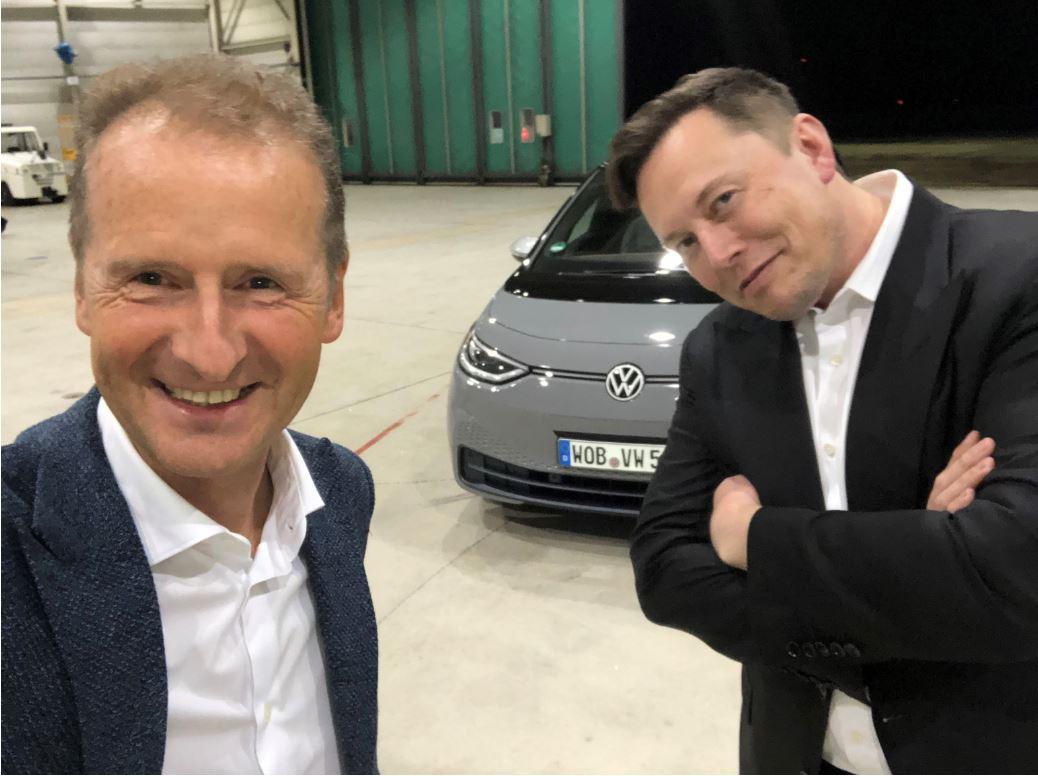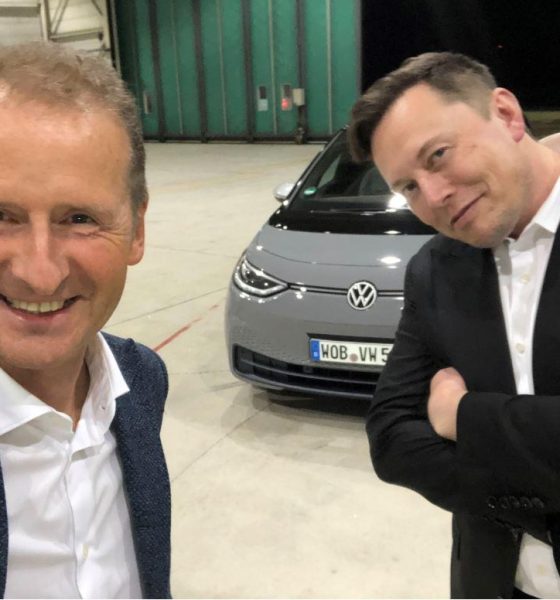Volkswagen has teamed up with Tesla in support of slashing import duties in India, the major barrier between automakers selling their vehicles in the market due to the high rates the country’s government has equipped to boost local manufacturing.
For the last few months, Tesla has made more progress toward entering India with its vehicles, hoping to increase sales in the fifth-largest automotive market globally. In 2021, Tesla has made more progress with the India entrance than ever before, receiving business licenses, registering itself as an entity with the ability to sell vehicles, and establishing a team of company executives to oversee the entire operation. It seemed that Tesla would finally enter the market, bringing clean and sustainable all-electric powertrains to the oil-savvy nation of India.
However, import taxes are a big hold up in the process currently. Cars with a price tag of $40,000 or less have a 60% import tax applied to them, while anything more than that number has a 100% duty, effectively doubling the price of the car. Tesla attempted to lobby with India’s government officials to reduce the import duties. Still, numerous members of the Parliament have declined to work with the automaker, as local manufacturing takes priority. Some government officials are concerned that it could take momentum away from domestic carmakers and auto parts suppliers. The deal must benefit India’s local entities.
This led to a bottleneck in Tesla’s potential entrance, as CEO Elon Musk stated he was unwilling to establish a manufacturing plant in India without testing demand. Demand would be measured through imports, and if sales figures in India were hefty enough that a production facility would be justified, Musk said that Tesla would build an assembly facility in the country. However, Tesla had pushback from politicians who said that individual companies could not receive incentives, but Tesla pushed for all EV makers to qualify for the reductions. Earlier this week, India’s officials announced there were talks to reduce duties to encourage non-domestic manufacturers to sell their products in the country.
Now, Volkswagen AG is getting involved and is pushing for lower import duties in India as well. The company is proposing reductions to as little as 25% for import duties, stating that the reduction would not pose a “big threat” to domestic companies but would still make imported vehicles more expensive than local options.
“The market for EVs has to be big enough for investments to come in, and for that, we shouldn’t be placing barriers,” Managing Director of Skoda Auto Volkswagen India Gurpratap Boparai said to Reuters.
Volkswagen AG has several electric vehicles out across its different brands, including Audi, and of course, its own VW brand with the ID.3, ID.4, and other models that are soon entering production. However, it is aiming for only its Volkswagen and Skoda brands to enter the market. This will not occur unless there is movement on import duties.
Attempts to decrease the duties have resulted in other manufacturers like Mercedes-Benz and Hyundai voicing support for the proposed cuts. However, local companies, like Tata Motors, are not encouraged by the proposals. Once again, the argument is local manufacturing should be prioritized. Boparai disagrees.
“I’m not at all saying that local manufacturing should not be encouraged … but duty of 60% and 100% is prohibitively high at this juncture,” he added.
What do you think? Let us know in the comments below, or be sure to email me at joey@teslarati.com or on Twitter @KlenderJoey.

News
Tesla expands Robotaxi app access once again, this time on a global scale
Tesla said recently it plans to launch Robotaxi in Miami, Houston, Las Vegas, Phoenix, and Dallas.
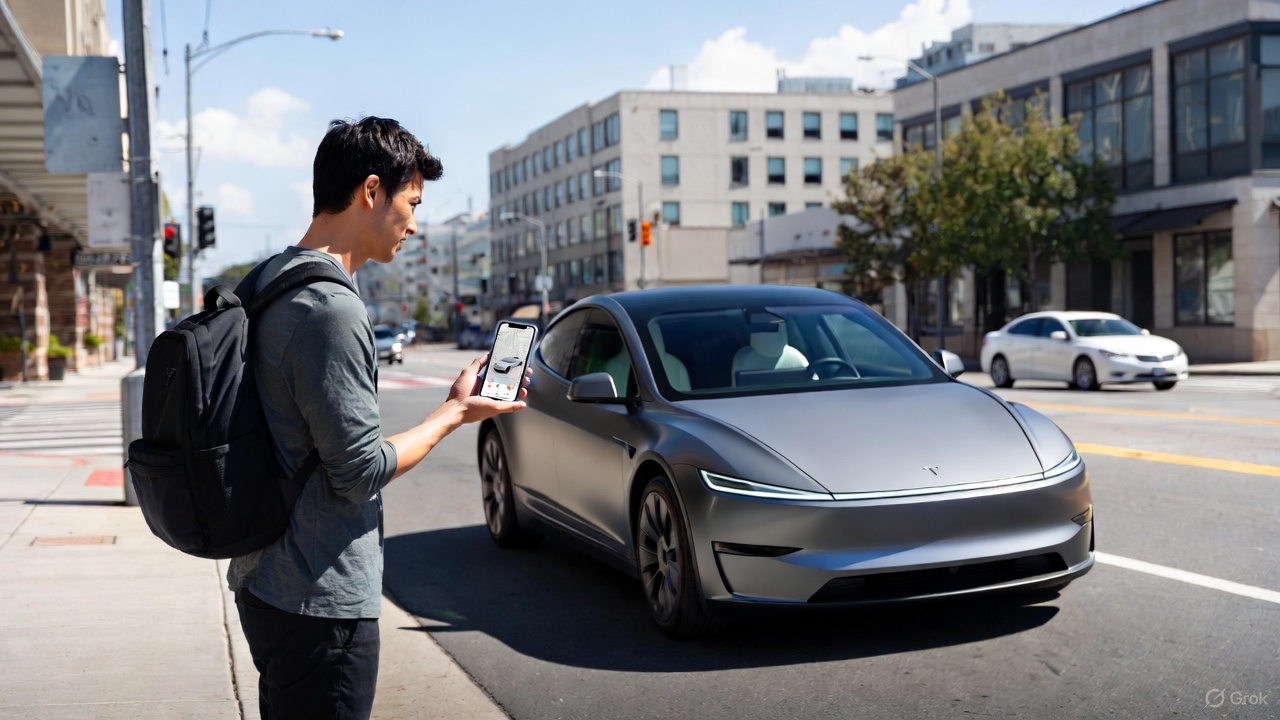
Tesla has expanded Robotaxi app access once again, but this time, it’s on a much broader scale as the company is offering the opportunity for those outside of North America to download the app.
Tesla Robotaxi is the company’s early-stage ride-hailing platform that is active in Texas, California, and Arizona, with more expansion within the United States planned for the near future.
Tesla said recently it plans to launch Robotaxi in Miami, Houston, Las Vegas, Phoenix, and Dallas.
The platform has massive potential, and Tesla is leaning on it to be a major contributor to even more disruption in the passenger transportation industry. So far, it has driven over 550,000 miles in total, with the vast majority of this coming from the Bay Area and Austin.
First Look at Tesla’s Robotaxi App: features, design, and more
However, Tesla is focusing primarily on rapid expansion, but most of this is reliant on the company’s ability to gain regulatory permission to operate the platform in various regions. The expansion plans go well outside of the U.S., as the company expanded the ability to download the app to more regions this past weekend.
So far, these are the areas it is available to download in:
- Japan
- Thailand
- Hong Kong
- South Korea
- Australia
- Taiwan
- Macau
- New Zealand
- Mexico
- U.S.
- Canada
Right now, while Tesla is focusing primarily on expansion, it is also working on other goals that have to do with making it more widely available to customers who want to grab a ride from a driverless vehicle.
One of the biggest goals it has is to eliminate safety monitors from its vehicles, which it currently utilizes in Austin in the passenger’s seat and in the driver’s seat in the Bay Area.
A few weeks ago, Tesla started implementing a new in-cabin data-sharing system, which will help support teams assist riders without anyone in the front of the car.
Tesla takes a step towards removal of Robotaxi service’s safety drivers
As Robotaxi expands into more regions, Tesla stands to gain tremendously through the deployment of the Full Self-Driving suite for personal cars, as well as driverless Robotaxis for those who are just hailing rides.
Things have gone well for Tesla in the early stages of the Robotaxi program, but expansion will truly be the test of how things operate going forward. Navigating local traffic laws and gaining approval from a regulatory standpoint will be the biggest hurdle to jump.
Investor's Corner
Tesla gets price target boost, but it’s not all sunshine and rainbows
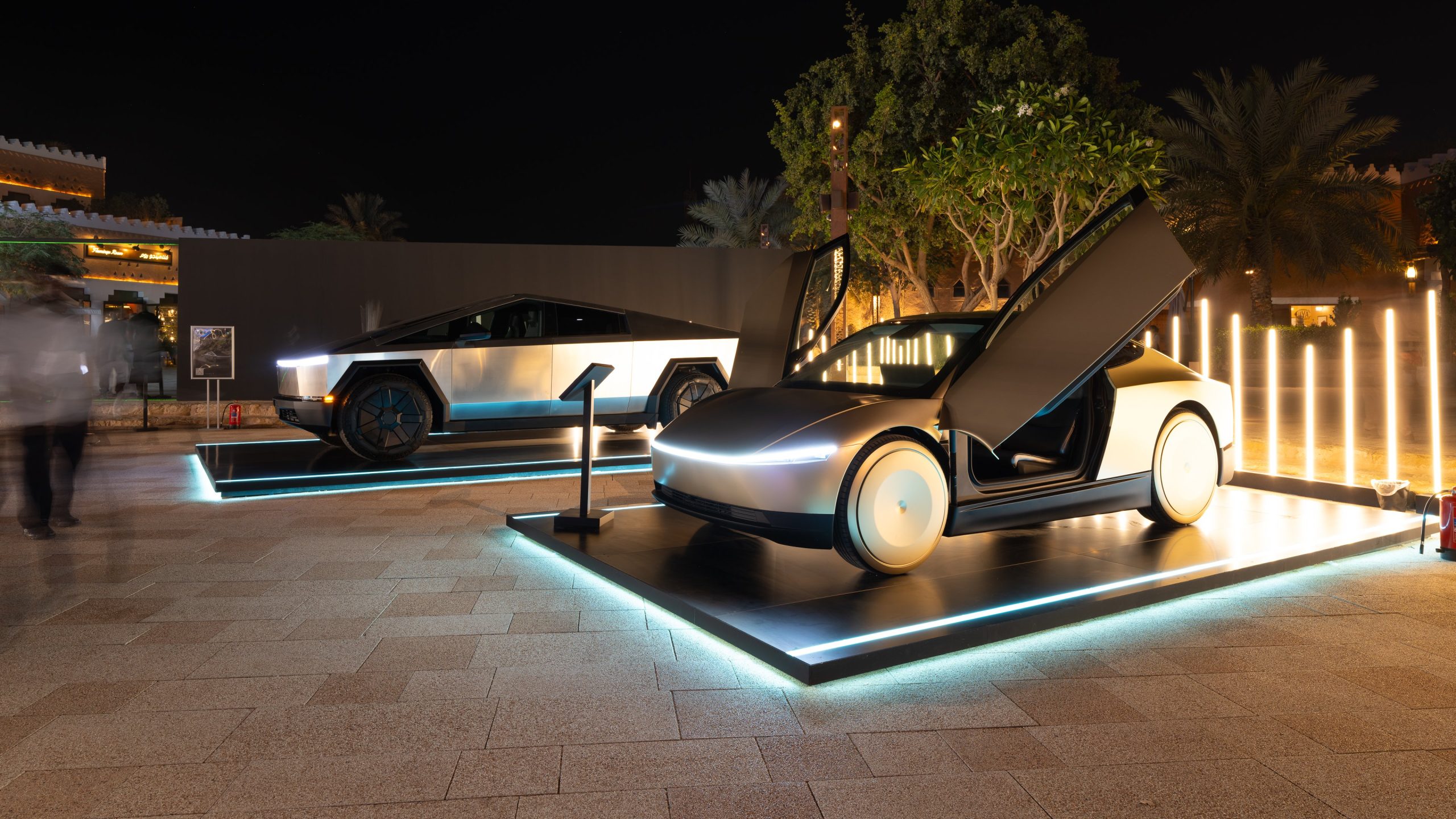
Tesla received a price target boost from Morgan Stanley, according to a new note on Monday morning, but there is some considerable caution also being communicated over the next year or so.
Morgan Stanley analyst Andrew Percoco took over Tesla coverage for the firm from longtime bull Adam Jonas, who appears to be focusing on embodied AI stocks and no longer automotive.
Percoco took over and immediately adjusted the price target for Tesla from $410 to $425, and changed its rating on shares from ‘Overweight’ to ‘Equal Weight.’
Percoco said he believes Tesla is the leading company in terms of electric vehicles, manufacturing, renewable energy, and real-world AI, so it deserves a premium valuation. However, he admits the high expectations for the company could provide for a “choppy trading environment” for the next year.
He wrote:
“However, high expectations on the latter have brought the stock closer to fair valuation. While it is well understood that Tesla is more than an auto manufacturer, we expect a choppy trading environment for the TSLA shares over the next 12 months, as we see downside to estimates, while the catalysts for its non-auto businesses appear priced at current levels.”
Percoco also added that if market cap hurdles are achieved, Morgan Stanley would reduce its price target by 7 percent.
Perhaps the biggest change with Percoco taking over the analysis for Jonas is how he will determine the value of each individual project. For example, he believes Optimus is worth about $60 per share of equity value.
He went on to describe the potential value of Full Self-Driving, highlighting its importance to the Tesla valuation:
“Full Self Driving (FSD) is the crown jewel of Tesla’s auto business; we believe that its leading-edge personal autonomous driving offering is a real game changer, and will remain a significant competitive advantage over its EV and non-EV peers. As Tesla continues to improve its platform with increased levels of autonomy (i.e., hands-off, eyes-off), it will revolutionize the personal driving experience. It remains to be seen if others will be able to keep pace.”
Additionally, Percoco outlined both bear and bull cases for the stock. He believes $860 per share, “which could be in play in the next 12 months if Tesla manages through the EV-downturn,” while also scaling Robotaxi, executing on unsupervised FSD, and scaling Optimus, is in play for the bull case.
Will Tesla thrive without the EV tax credit? Five reasons why they might
Meanwhile, the bear case is placed at $145 per share, and “assumes greater competition and margin pressure across all business lines, embedding zero value for humanoids, slowing the growth curve for Tesla’s robotaxi fleet to reflect regulatory challenges in scaling a vision-only perception stack, and lowering market share and margin profile for the autos and energy businesses.”
Currently, Tesla shares are trading at around $441.
News
Tesla Optimus dramatically collapses after teleoperator mishap
It seemed blatantly obvious that whoever was controlling the Optimus robot from behind the scenes did not disconnect their ability to manipulate its movements
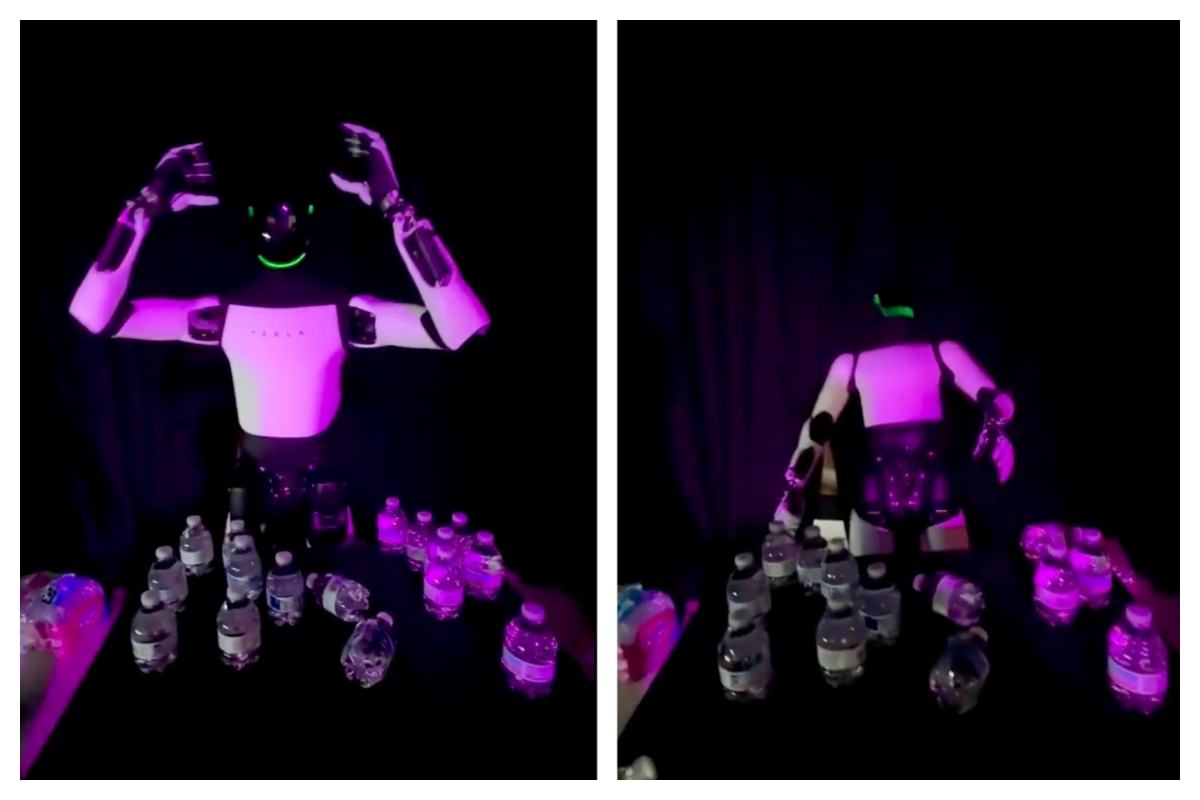
Tesla Optimus dramatically collapsed after a teleoperator mishap at the company’s “Future of Autonomy Visualized” event in Miami this past weekend.
It seemed blatantly obvious that whoever was controlling the Optimus robot from behind the scenes did not disconnect their ability to manipulate its movements, then left the controls, causing Optimus to collapse.
A video captured at the event shows Optimus doing a movement similar to taking a headset off, likely what the teleoperator uses to hear guest requests and communicate with other staff:
🚨 Tesla Optimus mishap at the Miami event
To be fair, don’t we all want to do this around the Holidays? pic.twitter.com/EJ5QKenqQd
— TESLARATI (@Teslarati) December 8, 2025
After the headset removal motion was completed, Optimus simply collapsed backward, making for an interesting bit of conversation. While it was a mishap, it was actually pretty funny to watch because of the drama displayed by the robot in the situation.
This was obviously a mistake made by the teleoperator, and does not appear to be a spot where we can put any sort of blame on Optimus. It would have likely just stood there and waited for controls to resume if the teleoperator had disconnected from the robot correctly.
However, details are pretty slim, and Tesla has not announced anything explaining the situation, likely because it seems to be a pretty face-value event.
Tesla Optimus shows off its newest capability as progress accelerates
The Tesla Optimus program has been among the most hyped projects that the company has been working on, as CEO Elon Musk has extremely high hopes for what it could do for people on Earth. He has said on several occasions that Optimus should be the most popular product of all time, considering its capabilities.
Obviously, the project is still a work in progress, and growing pains are going to be part of the development of Optimus.
In its development of Optimus Gen 3, Tesla has been working on refining the forearm, hand, and fingers of Optimus, something that Musk said is extremely difficult. However, it’s a necessary step, especially if its capabilities will not be limited by hardware.
All in all, Optimus has still been a very successful project for Tesla, especially in the early stages. The company has done an excellent job of keeping Optimus busy, as it helps with serving customers at events and the Tesla Diner, and is also performing tasks across the company’s manufacturing plants.
